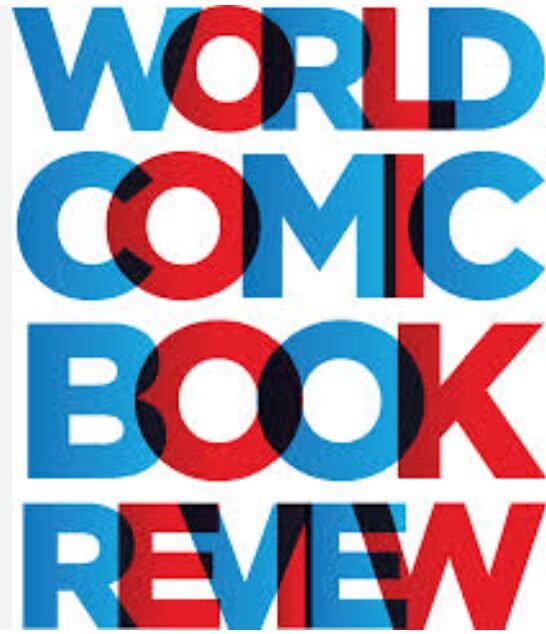The Sandman Oversize Special #1
DC Comics, August 2017
Writer: Dan Jurgens
“The Sandman Oversize Special” #1 is one facet of American publisher DC Comics’ line of special tribute comics, all dedicated to the legendary comic book creator Jack Kirby. Mr Kirby would have been 100 years of age this August. He passed away in 1994. This particular comic consists of several stories written by veteran superhero comic creator Dan Jurgens, with an eye towards both emulating Mr Kirby in terms of visuals and storytelling. It also includes some sentimental nods directed to Mr Kirby.
It is very obvious that this comic is not meant for new readers. A huge chunk of the comic revolves around a character called The Sandman, or to be more precise, one of the characters who have taken on the mantle. This particular version is otherwise called Garret Sanford. The character has a backstory that is far too convoluted to delve into for the purpose of this review. The story is digestible for new readers. But there are simply way too many tangential details about this version of The Sandman that readers will miss out on, at least without a cursory reading of British author Neil Gaiman’s monumental The Sandman series (1989-1996).
Entitled “The King of Dreams,” the first story in “The Sandman Oversize Special” follows the protagonist and his two reluctant sidekicks, Brute and Glob, as they try to prevent a young boy’s dreamed up monsters from crossing over to the real world. Readers who are familiar with Jack Kirby’s works will recognise many of the creatures to be based upon characters that Kirby has popularised. This is for good reason—it turns out that the young boy is Jack Kirby himself in his youth.
The second story, entitled “Caravan Crisis”, is unfortunately very inaccessible to the casual reader. It once again follows the Sandman and his two sidekicks as they try to help a character named Jed Walker overcome his constant nightmares. The character Jed Walker features prominently in both the original 1974-1976 series created by Mr Kirby, as well as in one of the major story arcs in Mr Gaiman’s The Sandman. Without any foreknowledge of the character’s backstory (or in cases were a reader has already forgotten given the passage of time), this story will lack proper context.
The remaining pages of “The Sandman Oversize Special” is devoted to a number of “Strange Tales from the D.N.A. Project.” The original, Kirby-created version of this comic had nothing to do with The Sandman franchise. Instead, these were short stories that ran in the pages of the long-running DC Comics’ title, Superman’s Pal, Jimmy Olsen, which Mr Kirby wrote and illustrated. The bit-sized stories in this issue are fairly thin, but may offer interesting sci-fi tidbits that help readers get acquainted with Mr Kirby’s fertile legacy.
On the whole, The Sandman Oversize Special does a great job of reminding fans of Mr Kirby’s works. It revisits a few characters that are closely associated with the iconic creator. On the other hand, the comic demands a lot of prior knowledge from the reader. The comic also is, sadly, a stark reminder that the overdramatic expository narrative style that was so prevalent in Kirby’s superhero era has not aged well, with one exception, discussed below. Mr Kirby’s readers have grown up and are very likely now to be in their 50s and 60s. Contemporary readers are more sophisticated than what they were in the early 1970s. What was once new is no longer. This title is fuelled by nostalgia, and is an historical superhero exposition rather than an innovative iteration.
Why is DC Comics making such a fuss? In 1970, Mr Kirby was lured back to DC Comics from Marvel Comics, a move which DC promoted on the front covers of its comics, trumpeting that “The King” was now at DC.. Mr Kirby had felt maligned by the disproportionate level of credit that Marvel Comics’ editor in chief Stan Lee took for the creation of iconic characters such as The Hulk, the Fantastic Four, and the Uncanny X-Men. At DC Comics, Mr Kirby created a cohort of characters and concepts called “The Fourth World”, and took on the role of writer and artist of DC Comics’ flagship title, Superman. But Mr Kirby was not well-treated by DC Comics, either. Famously, DC Comics had all of Jack Kirby’s renditions of the face of Superman and Jimmy Olsen drawn over by other artists.

(British writer Mark Millar tipped his hat to Mr Kirby’s extraordinary output by casting him as the brilliantly creative villain of Wildstorm Comics’ The Authority in 1999. This was a story arc which garnered international mainstream attention because of its pointed criticism of the Indonesian army’s genocide during Timor L’Este’s secession. In this story, the faux- Kirby, funded by the US government, had set up a secret facility that manufactures superheroes as part of a Cold War arms race. The very numerous villains featured in this arc plainly look like Mr Kirby’s numerous creative offspring from his time at Marvel Comics.)
Perhaps it is too much to read contrition into this homage. But if DC Comics wanted a better celebration of Mr Kirby’s imagination, then the publisher should again reprint but perpetuate the remarkable comic, Spirit World. This sophisticated title, by Mr Kirby, only lasted one issue in 1971 but was last reprinted by DC Comics in April 2011.


It crackles with innovation, even for a contemporary audience. Yet it is plainly crafted in the iconic Kirby style. This is how Mr Kirby should properly be remembered: a genius who from the 1940s to the 1970s mechanically serviced superheroes for large American publishers, but who would have been wildly successful if alive and unfettered in 2017.



